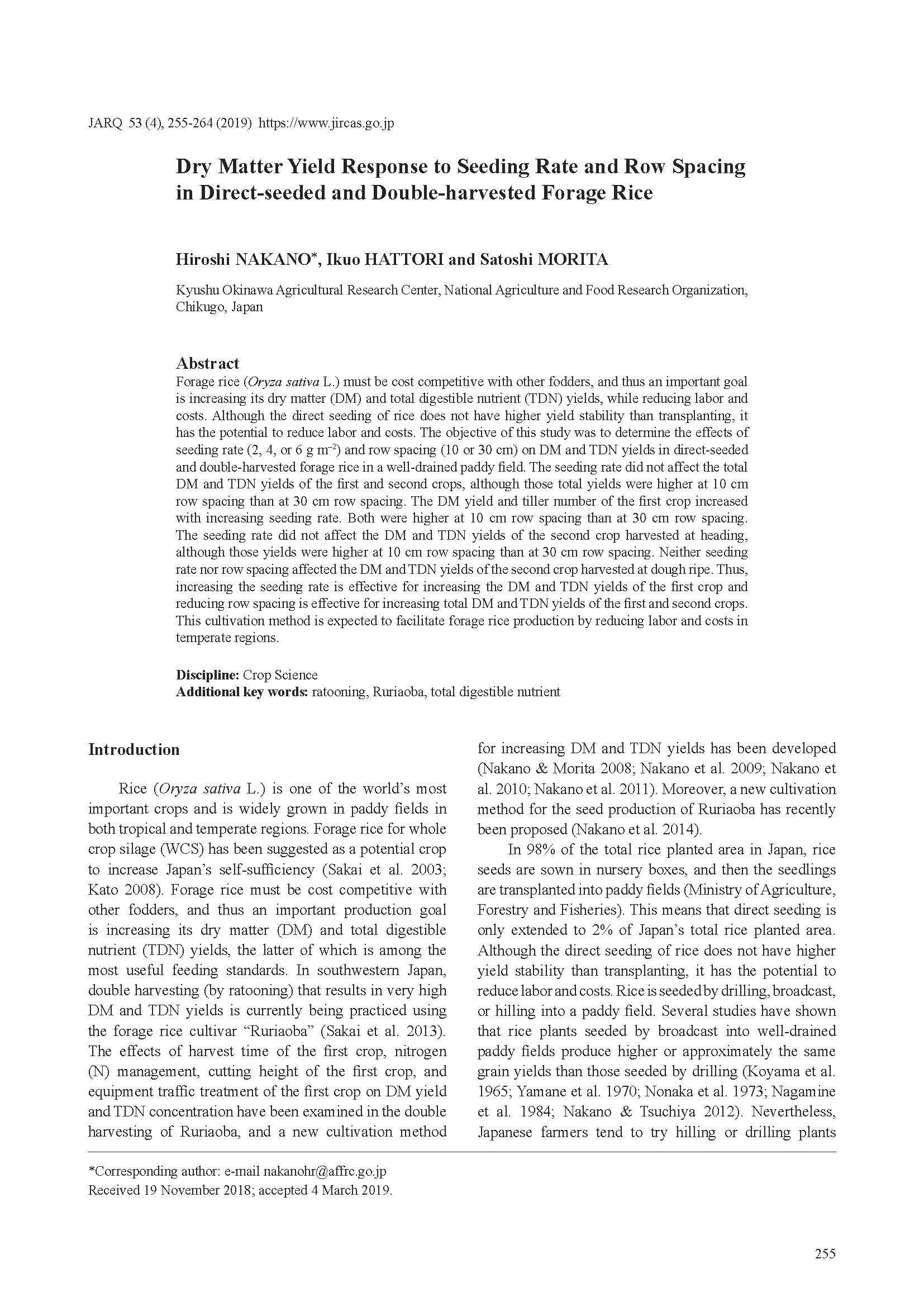Dry Matter Yield Response to Seeding Rate and Row Spacing in Direct-seeded and Double-harvested Forage Rice
JARQ : Japan Agricultural Research Quarterly
| ISSN | 00213551 |
|---|---|
| 書誌レコードID(総合目録DB) | AA0068709X |

本文フルテキスト
jarq53-4_255-264.pdf390.73 KB
Forage rice (Oryza sativa L.) must be cost competitive with other fodders, and thus an important goal is increasing its dry matter (DM) and total digestible nutrient (TDN) yields, while reducing labor and costs. Although the direct seeding of rice does not have higher yield stability than transplanting, it has the potential to reduce labor and costs. The objective of this study was to determine the effects of seeding rate (2, 4, or 6 g m–2) and row spacing (10 or 30 cm) on DM and TDN yields in direct-seeded and double-harvested forage rice in a well-drained paddy field. The seeding rate did not affect the total DM and TDN yields of the first and second crops, although those total yields were higher at 10-cm row spacing than at 30-cm row spacing. The DM yield and tiller number of the first crop increased with increasing seeding rate. Both were higher at 10-cm row spacing than at 30-cm row spacing. The seeding rate did not affect the DM and TDN yields of the second crop harvested at heading, although those yields were higher at 10-cm row spacing than at 30-cm row spacing. Neither seeding rate nor row spacing affected the DM and TDN yields of the second crop harvested at dough ripe. Thus, increasing the seeding rate is effective for increasing the DM and TDN yields of the first crop and reducing row spacing is effective for increasing total DM and TDN yields of the first and second crops. This cultivation method is expected to facilitate forage rice production by reducing labor and costs in temperate regions.
| 刊行年月日 | |
|---|---|
| 作成者 | Hiroshi NAKANO Ikuo HATTORI Satoshi MORITA |
| 著者キーワード | ratooning Ruriaoba total digestible nutrient |
| 公開者 | Japan International Research Center for Agricultural Sciences |
| 受付日 | 2018-11-19 |
| 受理日 | 2019-03-04 |
| 巻 | 53 |
| 号 | 4 |
| 開始ページ | 255 |
| 終了ページ | 264 |
| DOI | 10.6090/jarq.53.255 |
| 言語 | eng |
